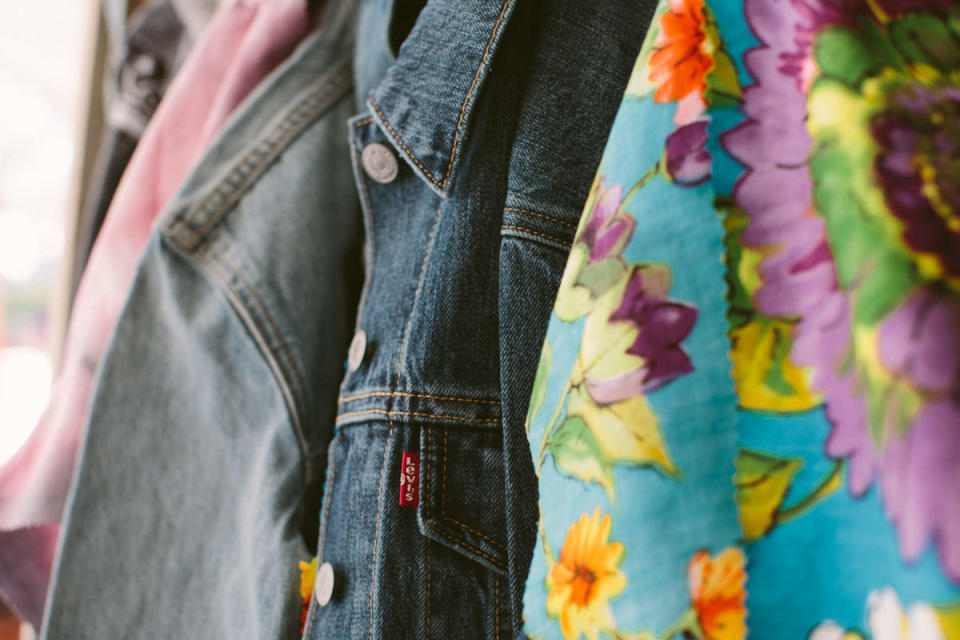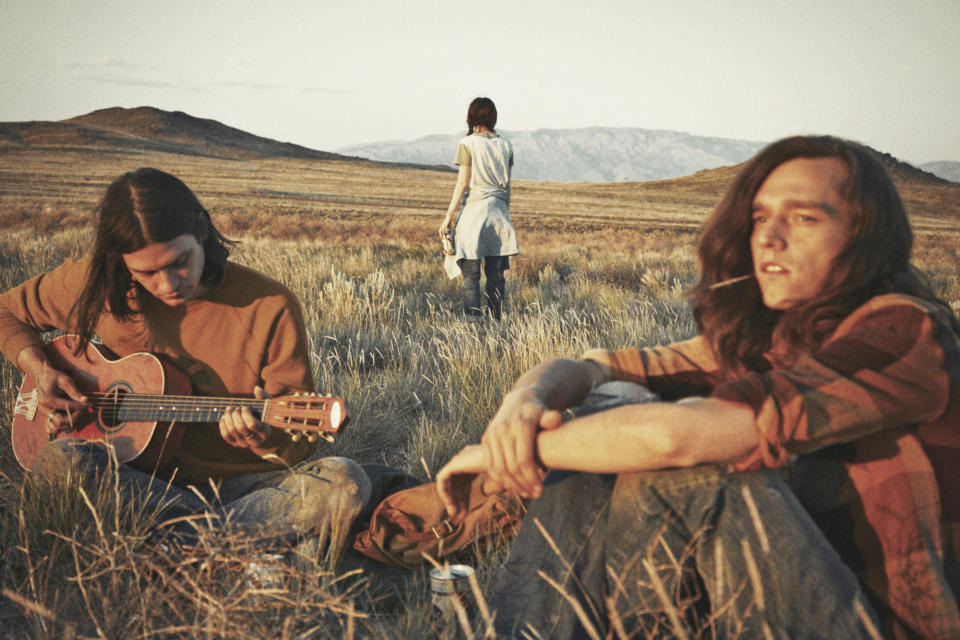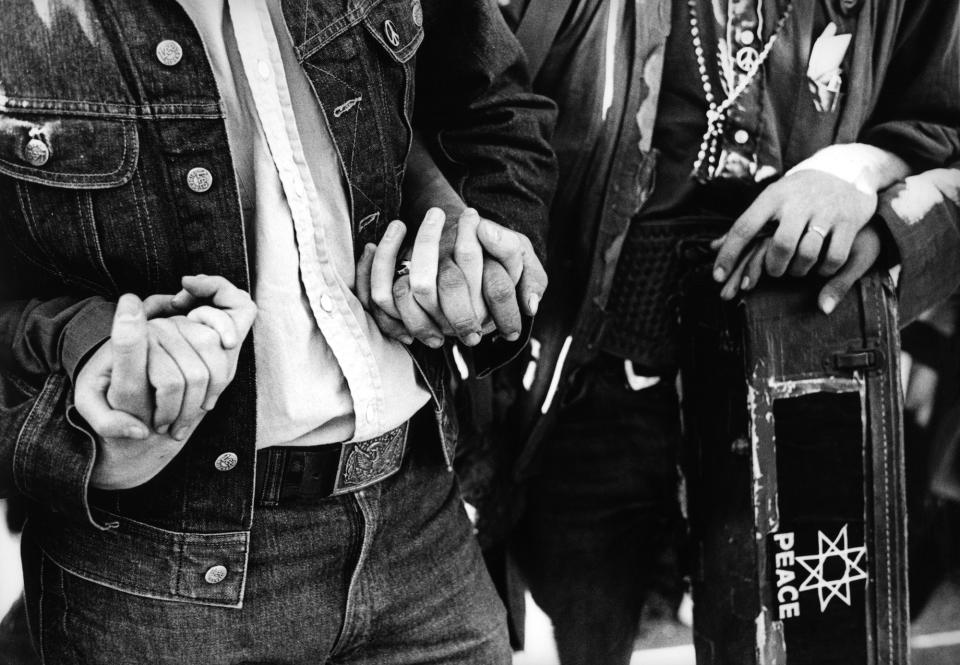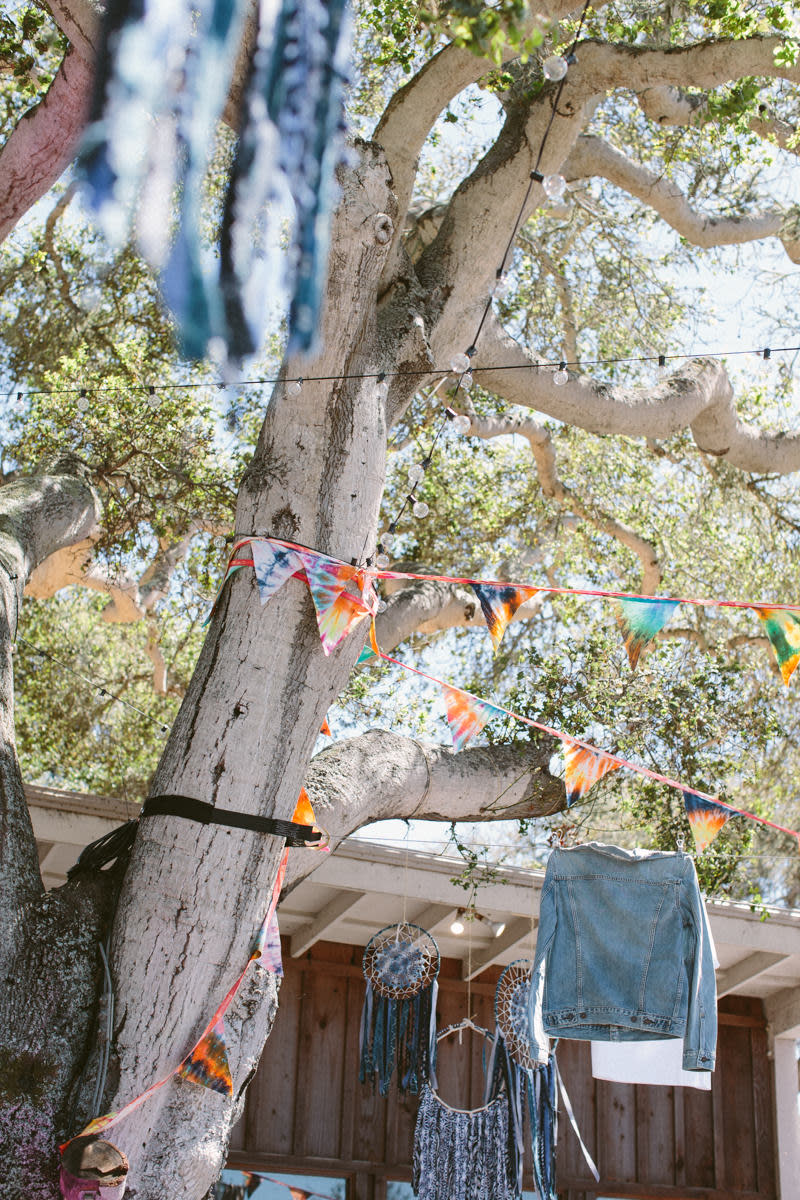50 Years Later, 'Flower Power' Still Looks Pretty Damn Good
When it comes to defining eras in modern fashion, it's tough to beat the late 1960s. From Yves Saint Laurent popularizing the trouser for women with his Le Smoking to Keith Richards upending menswear norms by pilfering from girlfriend Anita Pallenberg's closet, fashion during the end of the '60s was more revolution than evolution. And at the center of that revolution was the Summer of Love.
SHOP: levi.com
During the summer of 1967, more than 100,000 flower children descended on San Francisco to celebrate peace, love, and freedom-united, however loosely, by music, wild fashion, drugs, and opposition to the Vietnam war. It was a genuinely optimistic moment. As Hunter S. Thompson wrote in Fear and Loathing in Las Vegas, "There was a fantastic universal sense that whatever we were doing was right, that we were winning…we were riding the crest of a high and beautiful wave."
This year marks the 50th anniversary of that high and beautiful wave, and to celebrate, Levi's Vintage Clothing has released a 50th anniversary Summer of Love collection. Kicking off with an appearance at this year's Monterey Pop Festival-basically the festival that created music festivals, and the place where Jimi Hendrix made his name after lighting his guitar on fire-Levi's has brought back a lineup of some of its greatest 1960s hits, including painted "Crazy Legs" jeans, striped tees, and trucker jackets. We spoke with Levi's Vintage Clothing head of design Paul O'Neill about what it was like to dip back into such a classic era.

On the 1960s' continuing influence on fashion:
I think that by the mid to late-'60s, a carefree relaxed attitude to dressing appeared. And it has never quite gone away. Most of us still dress in a T-shirt, jeans, and sneakers. And while there were people wearing similar clothing in the '50s, it always felt more uptight. There was a certain swagger about the kids from the '60s. When you look at photos from '66-'67, you can see a lot of similarities in today's style.

On Levi's entering the American mainstream:
I'd say it was the 1960s when Levi's made a conscious decision to target the youth and fashion markets. Before this, it was mainly a workwear brand that had been adopted by rebellious youth in the '50s after seeing Marlon Brando and James Dean. But in the '60s, it became more acceptable for young people to wear jeans, so Levi's went after that market and created product specifically aimed at young America, evening advertising jeans as being "good for school."

On the perennial style of 501s:
The 501 is a classic, simple design that hasn't changed much since it was first produced in 1890. It doesn't lend itself to fashion, and that is why it always looks and feels relevant. In the 1960s, Levi's catered for the fashion-conscious with the white Levi's and Orange Tab products, where they introduced skinny fits or flares. But with the 501, they kept it pure, and for me that is the beauty.

On working with the bright colors and wild styles of the late '60s:
I've been a huge fan of the '60s since I was a kid, so it was a lot of fun to put this collection together. And of course, the "anything goes" spirit of the '60s gives us a lot of freedom when it comes to colors and patterns. Also, there are a lot of amazing clothes from that period, like the fringed suede jacket we reproduced, and the Crazy Legs pants. But for me, the defining aesthetic is a pair of 501s, a striped T-shirt, and some desert boots.
On how jeans and truckers are adaptable to every fashion era:
They are just classic pieces that were designed very well originally, so they didn't really need to change over time. Over the past 50 years, the 501 and the trucker jacket have kept the same aesthetic and have been adopted by nearly every subculture-from rockers and hippies, to punks and hip-hop kids. When you look at a photo from the past 50 years of someone wearing a trucker jacket or a pair of 501s, it's usually something else in the photograph that reveals the time period, as the trucker and 501 remain consistent.
You Might Also Like

